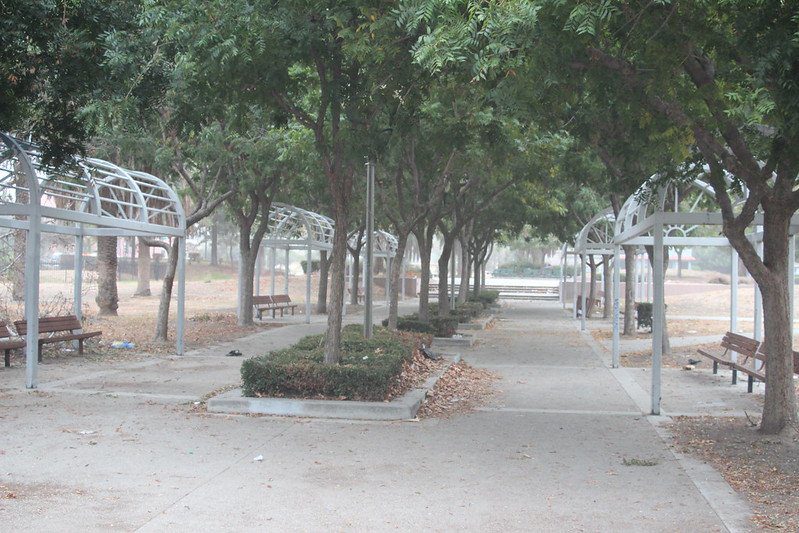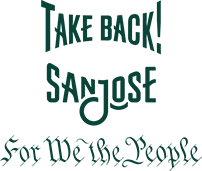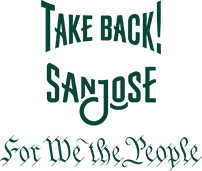
Image by Jeffery Scism
Ninth circuit ruling Martin v. Boise only allows cities to remove illegal encampments (read: enforce existing laws) if every homeless resident has the “option” of sleeping indoors. The ruling’s vague wording has inspired numerous debates and lawsuits, but the City of San Bernardino sweeps the controversy to the side, pointing out: their city cleverly utilized Martin v. Boise to clear dangerous camps and make public parks attractive again.
In 2019, in response to the challenges of Martin v. Boise (2018) and inhibitive legislation, the San Bernadino Police Department restructured its Operations Division. The department divided the city into five policing districts, each armed with its own sworn staff to address quality of life issues, primarily transient encampment clean-ups. Officers were posting the camps with 72-hour eviction notices three days before the encampment would be cleaned. After three days, officers would return with a crew from the city’s Public Works Department along with a Burrtec refuse truck, to execute the clean-up. These clean-ups, typically 5-10 daily, occurred Monday through Friday, from 0700-1700 hours, at a daily cost of $1,059.87 (2 officers/6 hours per officer) for two officers and a daily cost of $709.20 (2 employees/10 hours per employee) for two public works employees. This cost does not include Burrtec expenses for the trash truck or the accompanying Burrtec crew to clean the encampments; four Burrtec employees.
In 2022, the American Civil Liberties Union threatened the City of San Bernardino with litigation stemming from the clean-ups. The argument of the ACLU primarily rested on the Martin v. Boise (2018) decision, stating the city did not have adequate housing for the transients and as such, could not cite for the municipal codes related to anti-camping in parks and public storage. Additionally, the ACLU demanded the San Bernardino Police Department not be involved in any clean-ups or storage of personal property from encampments. The city agreed to transfer the primary responsibility of encampment postings and clean-ups to the Public Works Division. Public works staff had to be hired, trained, and deployed, solely for encampment clean-ups and for compliance with Martin v Boise (2018) and the ACLU agreement.
Currently, the Public Works Division retains lead responsibility for encampment clean-ups. They post encampments; store personal property of transients; and conduct refuse removal. As of August 2023, police officers have returned to accompanying the public works personnel
for law enforcement purposes and security concerns. Public works personnel complained of threats from the transients and one of the employees was even assaulted by a transient in a park. In September of 2023, the Public Works Division reported it has disposed of 828 tons of trash from encampments to date; an average of 23 tons per week. The encampment trash would fill approximately 6-7 football fields, to date. …
In May of 2023, faced with growing encampment and transient challenges, three of [San Bernadino’s] parks were closed for cleaning and infrastructure repair. Signage was posted throughout the parks and all encampments within the parks were provided 72-hour notices to vacate, with most encampments having additional time to move. The parks were thoroughly cleaned, repaired, and improved. The city hired a security firm to patrol the parks, authorizing them to issue citations for minor violations of municipal codes.
Since the city’s park repairs and cleaning, the Parks and Recreation Director reports an increase in attendance of 230% for the city’s community pool at Perris Hill Park. The city owned gazebos in the parks are being rented for celebrations; this had not happened in the previous five years due to encampments enveloping the gazebos. The open-air amphitheater is hosting events, one in which it is expected to have over 1,000 people attending. Once again, this had not happened for many years due to the criminal activity and conditions of the park caused by transient encampments and activity in the parks.
This article originally appeared in the City of San Bernardino website. Read the whole thing here.
RELATED:
- Report: Local progressives/conservatives join forces to challenge Ninth Circuit homelessness ruling
- CA city coalitions challenge Martin v. Boise’s ever-broadening “involuntarily homeless” definition
- What SJ can learn from Sandy Eggo’s No Camping ordinance
Follow Opportunity Now on Twitter @svopportunity

